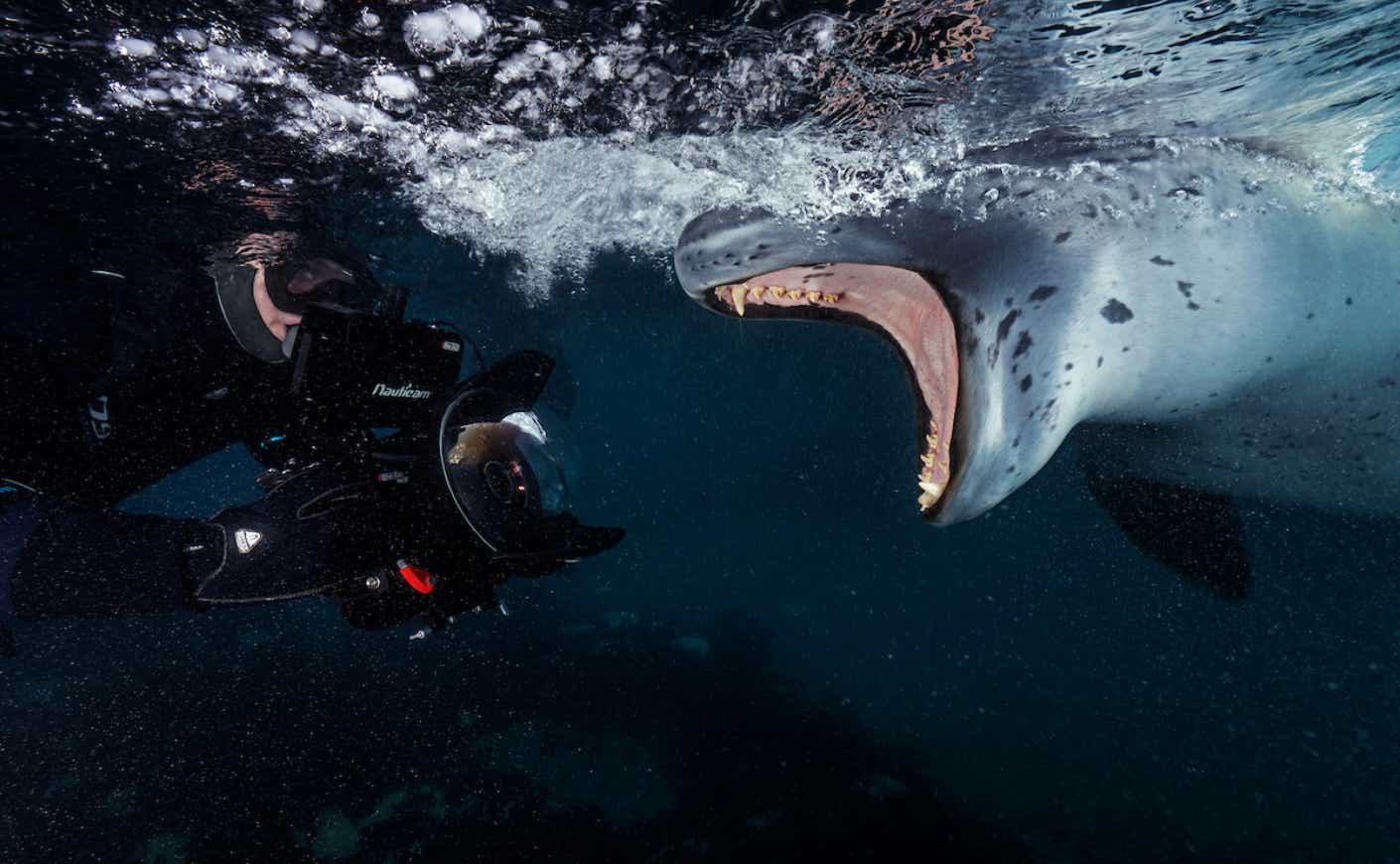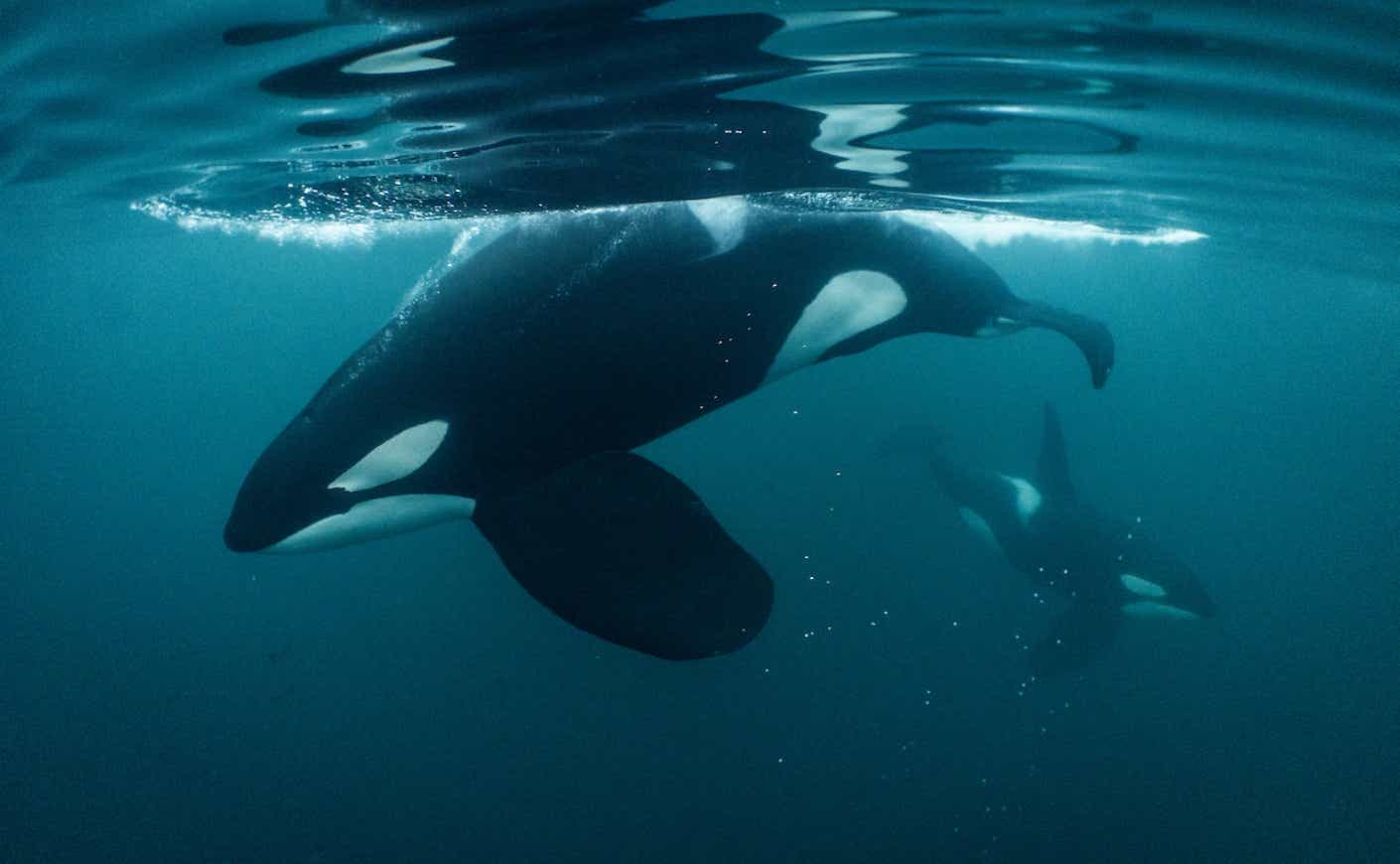Like many others, I’ve always been fascinated by the intelligence, playfulness, and curiosity of dolphins. As a kid, I dreamed of becoming a marine biologist so that I could swim with them.
Throughout my 30-year career, I’ve learned that connecting with animals takes respect and patience, and for me, no photo should come at the expense of an animal’s well-being. Every interaction I’ve had with wildlife has been on their terms, allowing them space to move freely and choose whether to engage. It makes for a better photograph.
I know I’m not alone in my love for animals. Humanity’s fascination with wildlife has inspired more people than ever to seek out close encounters, but many of these interactions cause unintentional harm. As wildlife experiences explode in popularity, thanks largely to social media, new challenges arise and destinations become overrun with unregulated tourism.
Why are unchecked wildlife experiences so harmful?
My partner Paul Nicklen and I have spent the last few months aboard the SeaLegacy1 in Raja Ampat, Indonesia, and what we’ve seen is shocking. While the beauty of the coral reefs and the diversity of marine life are breathtaking, I’m horrified by the sheer number of live-aboard dive tour boats. They all go to the same few sites, with minor regulations or visitor limits. It’s easy to see how inexperienced divers damage the reefs, and one can only guess how much human waste is being dumped directly into the ocean from those vessels.

But it doesn’t stop there: In some countries, there are reports of tourists bribing operators to get dangerously close to the whales or even swim with them for the perfect photo. In Norway, the “swimming with orcas” experience has become a chaotic and dangerous activity that the government has failed to regulate. In Baja California Sur, Mexico, inexperienced visitors are jumping into the water in the middle of feeding frenzies, where sharks and marlins hunt clusters of schooling fish.
Multiplied by millions of tourists worldwide and driven by selfie culture, interactions like these have spiraled out of control. What began as wildlife experiences have turned into widespread harassment, threatening both human safety and the well-being of marine life.
This oversaturation of tourism is stressing out wildlife and fundamentally changing their behavior. Research has shown that excessive boat traffic can cause marine life to change migration routes, alter dive patterns, and even abandon critical habitats or their young in order to avoid us. Feeding wildlife is equally harmful — it teaches animals to rely on humans and removes their healthy fear of us, making them more likely to end up killed.
How do we address this global issue?
Unfortunately, there’s no one-size-fits-all solution. It depends on the ecosystem, the scale of human impact, and the resources available for effective management.
What’s clear is that poorly managed tourism is unsustainable and often destroys the very attractions that tourists come looking for in the first place. We urgently need tighter regulations, visitor limits, and better-informed tourists.

The change we need is possible. A great example is the waters of the Rivera Maya in Mexico, where hundreds of whale sharks gather to feed. Initially, local fishermen switched to tourism, but the lack of regulation led to chaos, with over 300 tour boats crowding the area and unleashing hundreds of tourists into the water to harass the animals. Thankfully, the Mexican government stepped in and introduced strict regulations and licensing to bring interactions to a sustainable level.
Today, this site is a model for ecotourism, a concept that could be part of the solution. The International Ecotourism Society defines this as “responsible travel to natural areas that conserves the environment, sustains the well-being of the local people, and involves interpretation and education.”
How can you tell if tourism is being handled ethically?
The right kinds of wildlife experiences can be easy to spot if you ask the right questions.
- Does the tour operator follow strict wildlife interaction guidelines?
- Do they limit the number of guests?
- Do they guarantee specific animal encounters (a red flag)?
- Is there an educational component, like a talk, video, or pamphlet?
- Are they locally run and committed to sustainability?
Sometimes, it’s as simple as trusting your gut. That intuition gets sharper as we become more aware of our impact as tourists and learn to recognize the difference between sustainable and unsustainable tourism.

Ecotourism benefits nature and local communities and offers a more authentic experience — likely far more rewarding than visiting the top-rated, oversaturated tourist attractions you find at the top of a Google search.
If you’re looking for something to watch and want to learn more, I recommend The Last Tourist, a free documentary that sheds a lot of light on these issues and how to solve them.
The desire to travel and connect with nature is part of being human. It’s something I believe everyone should be able to enjoy. Seeing a pod of dolphins in the wild or hearing a whale’s song can evoke a deep sense of awe. These moments are what inspire us to care, and they remind us why conservation matters.
Paul Nicklen and Cristina Mittermeier co-founded SeaLegacy in 2014. SeaLegacy’s mission is to inspire people to fall in love with the ocean, amplify a network of changemakers around the world, and catalyze hands-on diplomacy through hopeful, world-class visual storytelling. For more updates on their meaningful work, learn more about SeaLegacy, and subscribe to Ripple Effect, Katie Couric Media’s sustainability newsletter.









